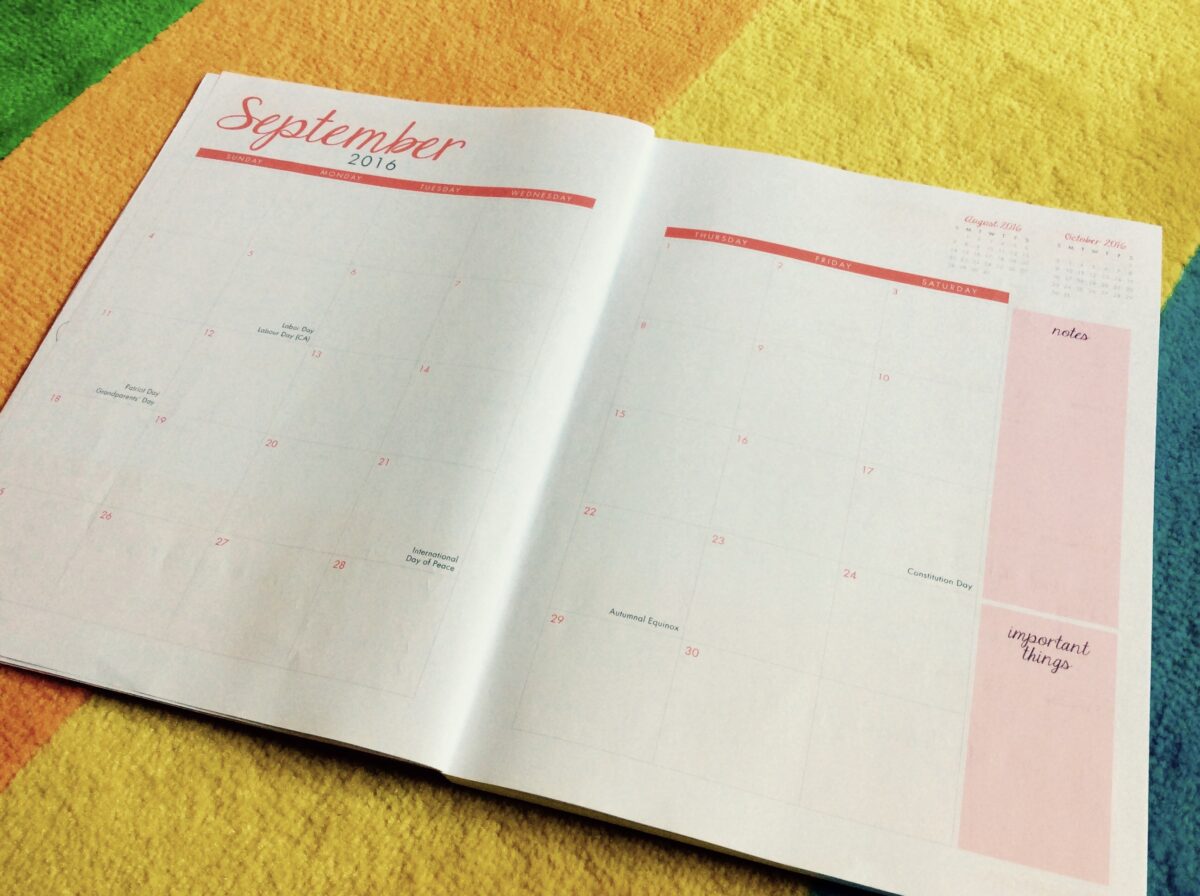How do you control your schedule? It took me quite a while to answer that one. Fixed schedules don’t work at all for me. I wish they did. They would certainly have saved me a lot of grief over the years. I tried using professional planners with entries for each hour of the day and night, pretty agendas with words of inspiration printed on each page, calendars with extra large squares to write in daily tasks, and electronic versions of each that sent me helpful reminders every single second. Unfortunately, none of these have ever done me any good.
The problem is that if I tell myself I must do a particular task at a specific time, one of two things happens: my brain rebels and refuses to cooperate, or something unexpectedly comes up to change my plan altogether. Then I invariably end up feeling like a total failure for not sticking to THE SCHEDULE.
If this sounds like you, don’t despair. Put aside your agenda for now and try the following technique.
STEP 1
Rather than adhering to a strict schedule, I jot down what I wish to accomplish today, this week, next month or even for the rest of the year. Then I break these down into smaller doable bits and chunks.
Yesterday for example, I decided I wanted to get the following tasks done and that they might take roughly this much time:
- Translation – 2 hours
- Write this post – 2 hours
- Work on a beginning reader story – 1 hour
- Workout – 30 minutes to 1 hour
- Call the plumber – 5 minutes
Total: about 6 hours.
Before going to bed, I looked at my list. It was more than I usually attempt in one day. I knew there was a better chance of me getting through it if I finished at least one of these tasks before I went to my library job. Unfortunately, there was no guarantee I would be able to drag myself out of bed before my usual time of 7 am. The thing is I’m not a morning person. Although I naturally wake up around 5 am, if my brain doesn’t latch on to some weird or worrisome thought I happily drift back to sleep for another couple of hours. So for me to get any work done that early in the morning mostly depends on whether I can coax myself into doing so. This is where the next crucial step of my technique comes in.
STEP 2
I give myself options.
Since I don’t like to do things when I feel forced to (does anyone?) I give myself as many options as possible. So looking at my list, I figured out that if I managed to wake up — and stay awake — at 5 am, I could tackle either the translation or this blog post. If not, I could aim for 6 am and do my workout or write my beginning reader story. As for the plumber, I could simply call him later in the day (I doubt he would have happily answered my call that early anyway).
So, how did things turn out? Amazingly, I did manage to work from 5 to 7 am (I chose the translation). When I came home in the middle of the afternoon, I called the plumber and started this blog post. I stopped halfway through to do my workout, then resumed the blog post where I left off. After getting that out of the way, I took a short break for dinner then jumped into my beginning reader story. Yes, it was a very full day — but a very happy one, too. I loved feeling that I had total control over my schedule instead of it controlling me!
